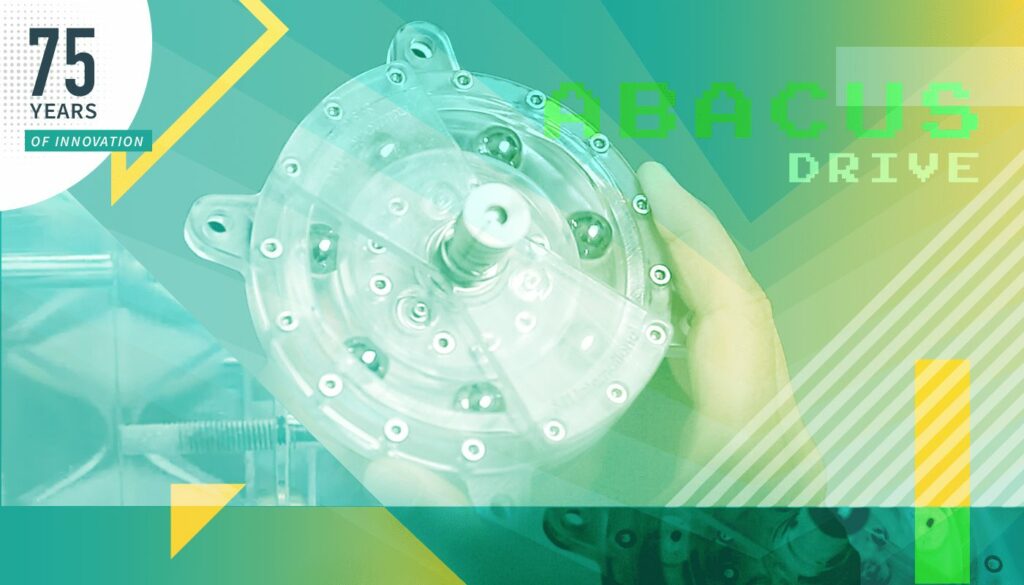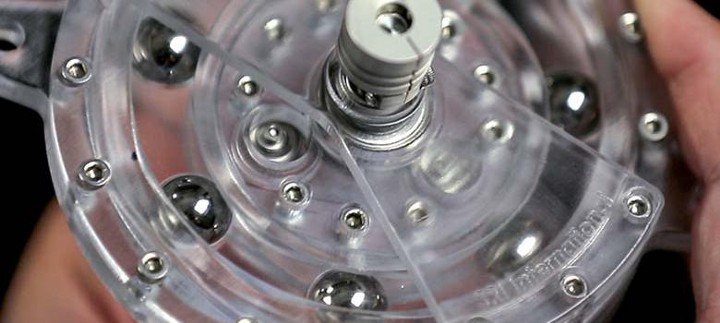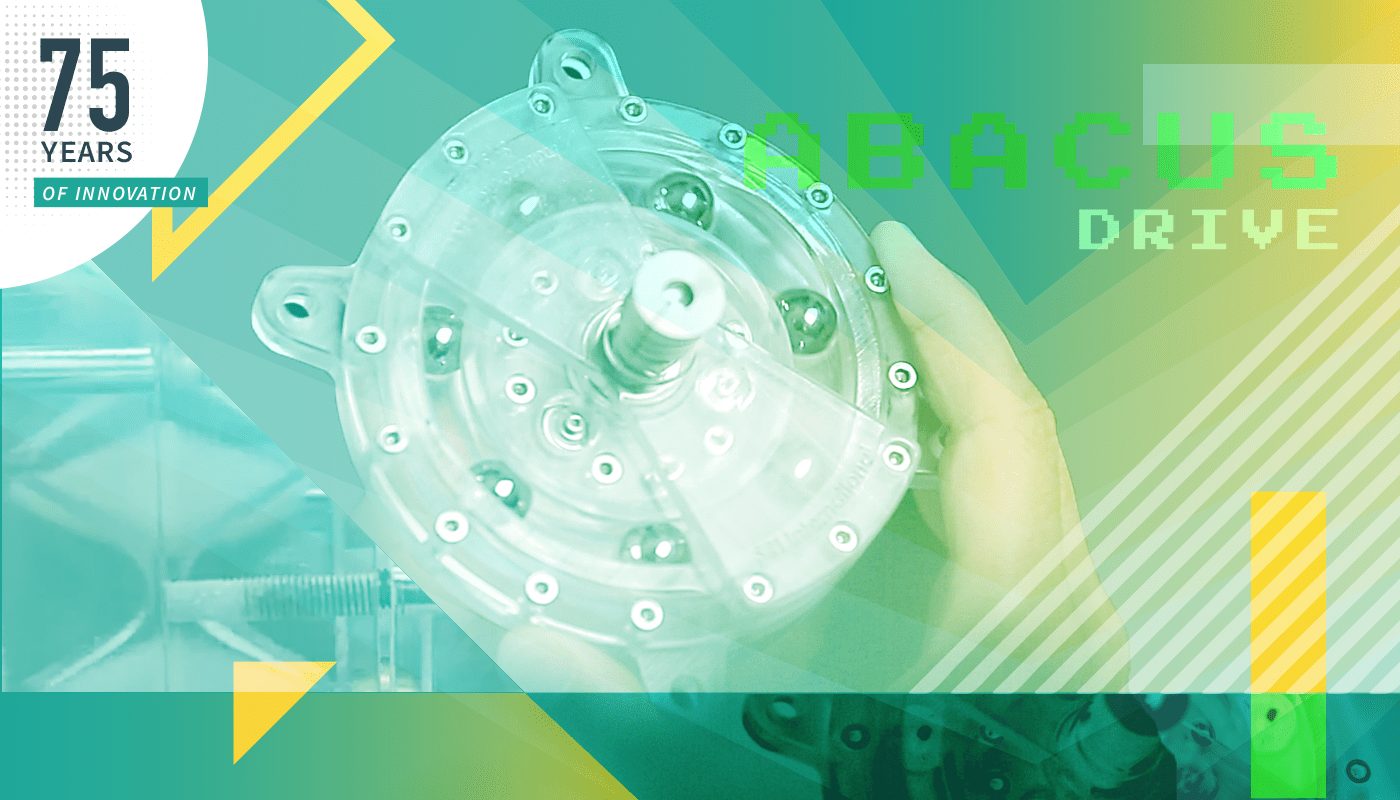The 75 Years of Innovation series highlights the groundbreaking innovations spanning from SRI’s founding in 1946 to today. Each week, SRI will release an innovation, leading up to its 75th anniversary in November 2021.

One of the only new fixed-ratio rotary transmissions since the Harmonic Drive debuted in the 1960’s
The Abacus Drive: How a series of rolling beads sparked an idea, and a more efficient and stiff transmission
Sometimes, when you look at an engineered object, you can see true beauty in it above and beyond its function. This is the case of the Abacus Drive. Watching the prototype of the Abacus Drive, demonstrated at IEEE Spectrum in 2016, is like seeing something that Leonardo Da Vinci invented.
Animals, plants and things all evolve, and the Abacus Drive is a speciation event in the world of engineering. It is the first new fixed-ratio rotary transmission design since Harmonic Drive Systems introduced its novel strain wave gear system in the 1960s. This engineering wonder is helping to take robotics to new levels of efficiency and accuracy.

Gear teeth slide — Abacus rolls
Mechanical power trains commonly use gears to deliver the required combination of speed and torque from a motor to the output. For some applications (such as car gear boxes) traditional gear trains are adequate for this purpose. However, for robotics in particular, there is a need for compact drives that have high gear ratios and high positional accuracy. In order to achieve these needs, these drives sacrifice efficiency and torsional stiffness.
SRI engineers came up with a beautiful, zero backlash, high gear ratio, high torque, low-cost transmission which they named the Abacus Drive.
In 2016, at the 12th Annual RoboBusiness conference and trade show at the San Jose Convention Center, SRI engineers demonstrated the capabilities of the Abacus Drive. The inner part of the drive has a series of ‘beads’ — hence the name ‘Abacus’. The beads act as rolling spacers, which move between double grooves. The result is a drive similar to a cycloid transmission but that utilizes pure rolling motions. Where Harmonic gears use gear teeth, the Abacus Drive uses beads. Unlike gear teeth, there are no parts that rub or slide against each other. Instead, the beads facilitate a smooth roll.
Abacus, no backlash, no spilled milk
The Abacus Drive was designed for use in robotics. Imagine that you have a robotic arm that needs to be precisely positioned to pick up a glass of milk. It’s a delicate operation, and the slightest inaccurate calculation of where the robot arm is, in space, could result in spilled milk. When traditional gears operate, a process known as ‘backlash’ can occur. Backlash refers to the amount of clearance between gear teeth, left for lubrication. This clearance gap means that when the train of a gear goes into reverse, the teeth don’t re-engage immediately due to this gap, leading to positional error in the angle of the output shaft. In terms of positioning, as in our robot picking up the glass of milk, the backlash can adversely affect the robot’s arm position — resulting in the robot spilling the milk.
In the Abacus Drive, smoothly rolling beads transmit the power between input and output, much more smoothly than gears can and, importantly, they do not suffer from backlash. The Abacus Drive is a new species of rotary drive that ticks the boxes of high stiffness, reduced-speed, zero backlash, and high-torque transmission.
Harmony reigns at SRI
Because the Abacus Drive has no parts that rub or slide against each other, energy wastage is massively reduced. Consequently, the Abacus Drive has been shown to have an efficiency of 93%+. The first prototype of the Abacus Drive was 3D printed. Since then, Harmonic Drive Systems has partnered with SRI International, licensing the technology and working in collaboration with SRI on commercializing the Abacus Drive. The beads and grooves that power the Abacus Drive offer the world of robotics the type of smooth operation for the type of fine robot actuation needed to make safe and precise robots.
Resources
YouTube, Harmonic Drive, “Harmonic Drive Strain wave gear principle“: https://youtu.be/bzRh672peNk
YouTube, SRI Demonstrates First New Rotary Transmission Design in 50 Years: https://youtu.be/zoaHeamUqBE




